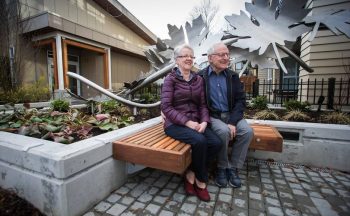 December 2021
December 2021
Retirees and soon-to-be-retired are among those who enjoy a condo lifestyle where convenience, amenities, services and social activities are of more importance. They are not ready for a retirement community providing assistive services or a retirement home.
With senior citizens projected to be 25 percent of the population by 2030 and longer lifespans, chances are that many more communities will be supporting a larger aging population in the not-too-distant future.
The plan is for active retirees and seniors to age in their condominium. When they become less active because of increasing physical or cognitive issues, the condominium may no longer be suitable. Formerly mobile residents requiring a wheelchair, cane or other assistive devices have need for wider doorways and accessible doors.
Cognitive impairment creates different needs and challenges.
While condo living attracts seniors and others because of the ease which they can retain autonomy, situations arise where some individuals decline to a point that their safety and security, and of all building residents, is at risk. Some may behave in a manner that causes disturbances to others. Compliance with condo rules may become a challenge. Situations may arise where a resident is unable to safely maintain or reside in their home, and become a safety or health risk to themselves or other residents.
Owners are presumed to have the ability to understand enough to vote. This may not always be correct. They may be less capable of understanding issues, fail to vote or be improperly influenced in how they vote. This impacts on a community’s ability to elect quality directors and make good choices about their home.
The Human Rights Code and other laws enacted to protect individuals does not, and cannot be expected to address the diversity of situations that arise in high-rise communities.
There are partial solutions. Communities can facilitate aging in place by making it easier to find local caregivers, food delivery services and cleaning services for residents willing to pay for this assistance. They can work with local retirement homes to assess individuals for independent living and ease their migration to facilities providing needed care and assistance.
 Communities that learn to navigate these concerns will be more appealing to the growing number of seniors expected to reside in high-rise buildings by 2030.
Communities that learn to navigate these concerns will be more appealing to the growing number of seniors expected to reside in high-rise buildings by 2030.







